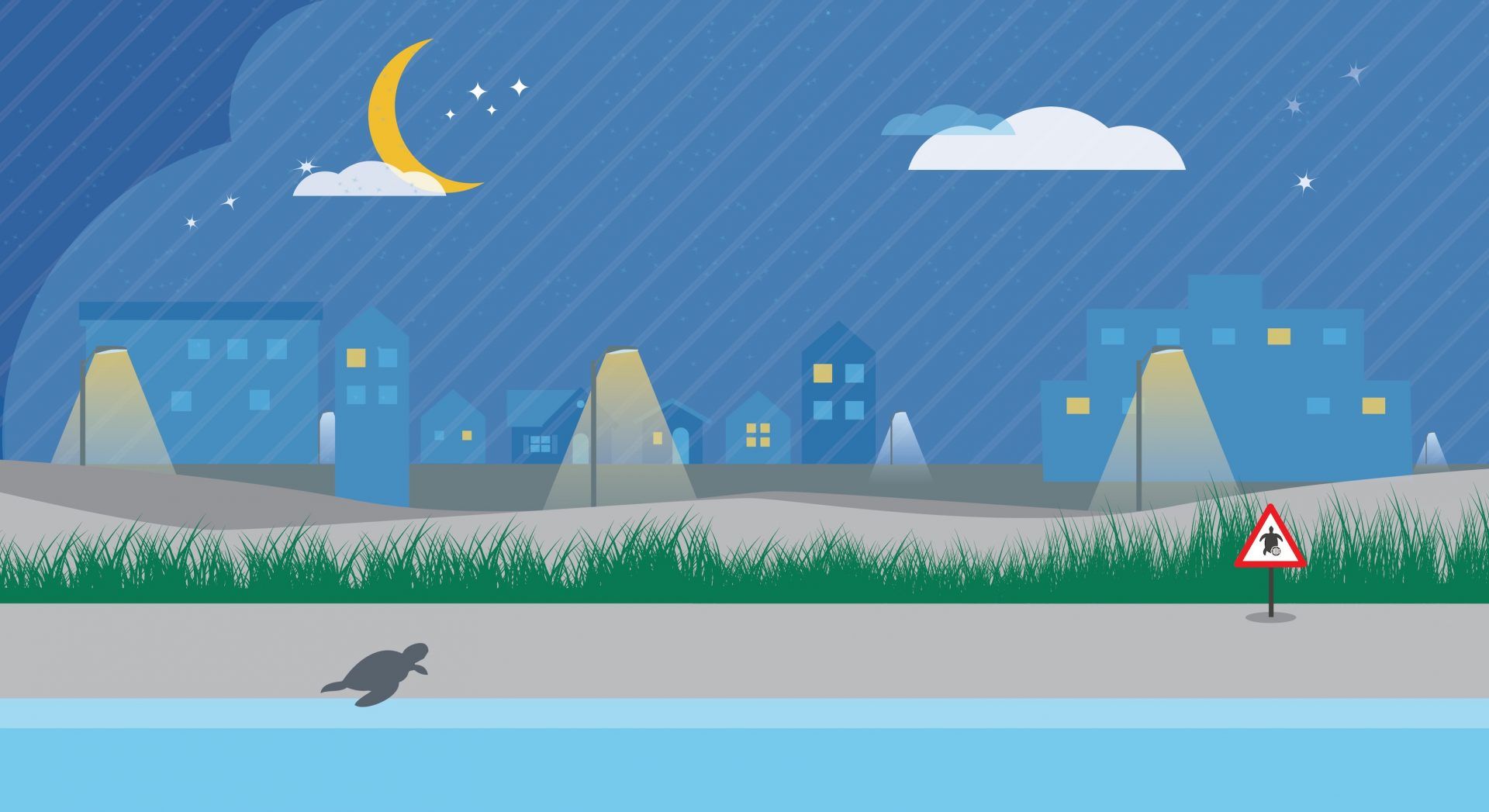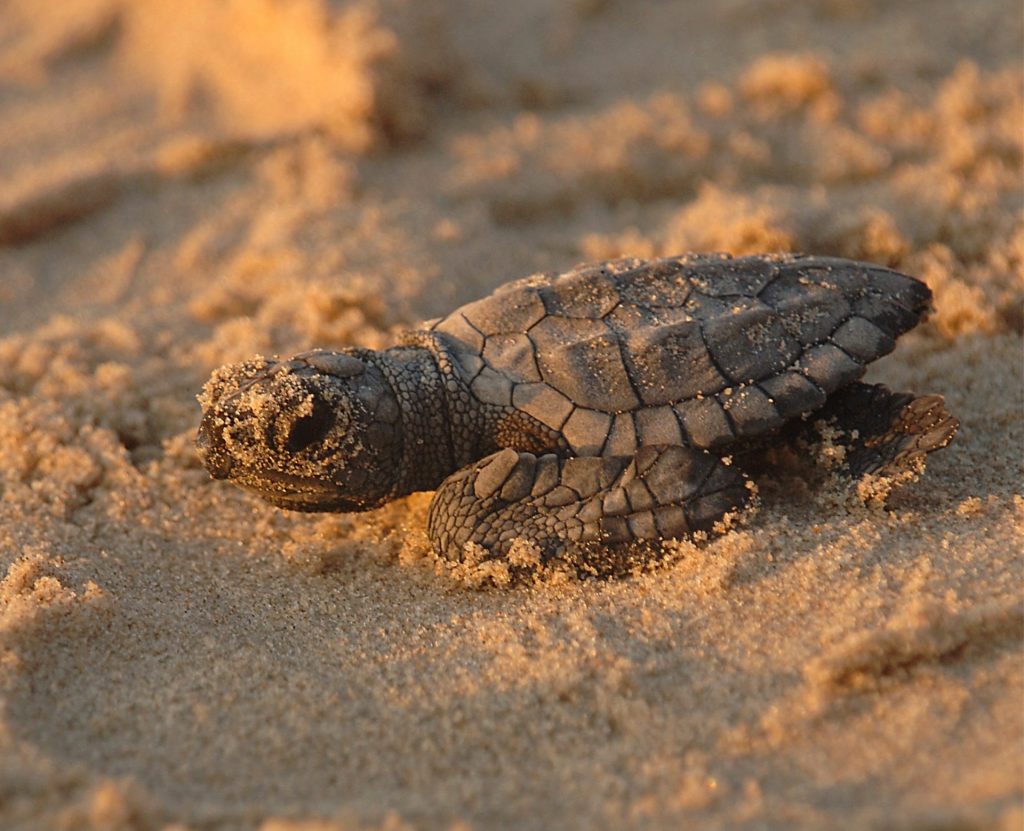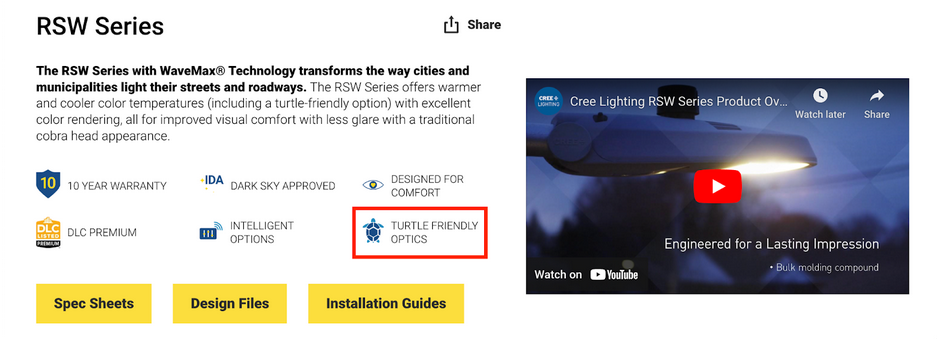Breadcrumb Navigation
- Lighting Insights
- Outdoor Lighting
- Why Turtle-Friendly Amber Lighting Matters
Why Turtle-Friendly Amber Lighting Matters
With amber light technology, outdoor lighting is less visible to turtles.


Satellite imagery of Earth at night reveals seemingly beautiful spiderwebs of light emanating from bright points marking our largest cities. It’s light that allows us to continue living our lives safely and comfortably after sundown. However, for the wildlife with which we share our world, research in recent years has uncovered that some nighttime illumination can cause disruption. This growing understanding has sparked new technology and municipal guidelines, as well as a greater awareness of what to consider when lighting our communities.
What You Should Know About Wildlife and Artificial Light
From owls and turtles to butterflies and bees, wildlife may experience disruption from artificial light at night (ALAN) when:
- ALAN brings light into areas or dayparts where it doesn’t naturally occur
- ALAN introduces light with a different spectral distribution than that of sunlight, moonlight or starlight, with varying impacts on behavior or physiology
These two primary ALAN impacts can occur both in instances of direct illumination from light sources and indirectly from “skyglow,” created when atmospheric molecules scatter and reflect light upwards.
Light can disrupt foraging behavior and attract animals in ways that make them vulnerable to predation. Conversely, it can also actively repel animals such as bats and rodents from their natural territories, leading to habitat loss and declining populations. Beyond its visual effects, ALAN interrupts the biological clocks of many species, further confusing their efforts to sleep, feed and reproduce.
How Does Artificial Light Affect Turtles?
Sea turtle hatchlings may be drawn towards artificial lighting sources, following their instinctive response that leads them seaward on naturally lighted beaches. This exposes them to predators, exhaustion, and dehydration, which can lead to death. Artificial lighting’s brightness and glare are theorized to be possible causes.
The story of sea turtles is one prominent example of ALAN impact. Sea turtles orient themselves by the position of the moon as they come ashore to lay their eggs, and instinctively avoid laying eggs on beaches bathed in light. But when moonlight is overpowered by lighting from parking lots, streets, hotels and condominium towers, turtles unable to find a properly dark spot either avoid laying eggs at all or nest under the glare of ALAN—a danger to the hatchlings to come.

Newly hatched turtles also use the moon to gain their bearings. Relying on years of evolved instinct, hatchlings immediately scamper toward the moon to reach the safety of the ocean. But hatchlings disoriented by ALAN may head inland toward the brightest light and perish before ever reaching the water. Losing hatchlings in this way poses a major risk to the long-term survival of three endangered species: green, loggerhead and Kemp's ridley sea turtles.
Turtle-Friendly Outdoor Lighting
With Florida home to 90 percent of the sea turtle nesting in the U.S., the Florida Fish and Wildlife Conservation Commission (FWC) has established simple criteria to mitigate the impact of ALAN. Choosing amber lighting technology or other regulation-compliant turtle safe lighting can lower the risk of disorientation and disruption in sea turtles’ nesting habits. A growing number of Cree Lighting outdoor LED area lighting products follow these guidelines, offering turtle-friendly (TRL) amber LEDs and lumen packages including our RSW®, Traveyo® and LEDway® Series for street and roadway lighting; THE EDGE® Series lighting for pathways, common spaces and parking lots; and the 304 Series® for petroleum canopy and soffit lighting.
We’ve made it easier than ever to find our turtle friendly lights. Just go to a product series page and look for the ‘Turtle Friendly Optics’ badge that we include. On our RSW Series page, you can see it here:

If a product is not labeled as turtle safe lighting, reach out to us about your next project and we’ll work with you to determine the best fixtures to achieve an environmentally-conscious illumination strategy.
Our amber light technology uses true monochromatic amber LEDs to produce light wavelengths that are less visible to turtles and other wildlife, instead of phosphor-converted LEDs found in other amber lights that still produce the blue-wavelength light that may disrupt local wildlife.
What You Can Do
When looking for a lighting solution, the most important thing you can do is educate yourself about your options for wildlife-friendly lighting—and we’re here to help. To learn more, download our Lighting for a Different Kind of Night Life white paper or tune into our Understanding International Dark Sky Association (IDA) on-demand webinar. We also welcome your questions at 262-886-1900 or info@creelighting.com.
